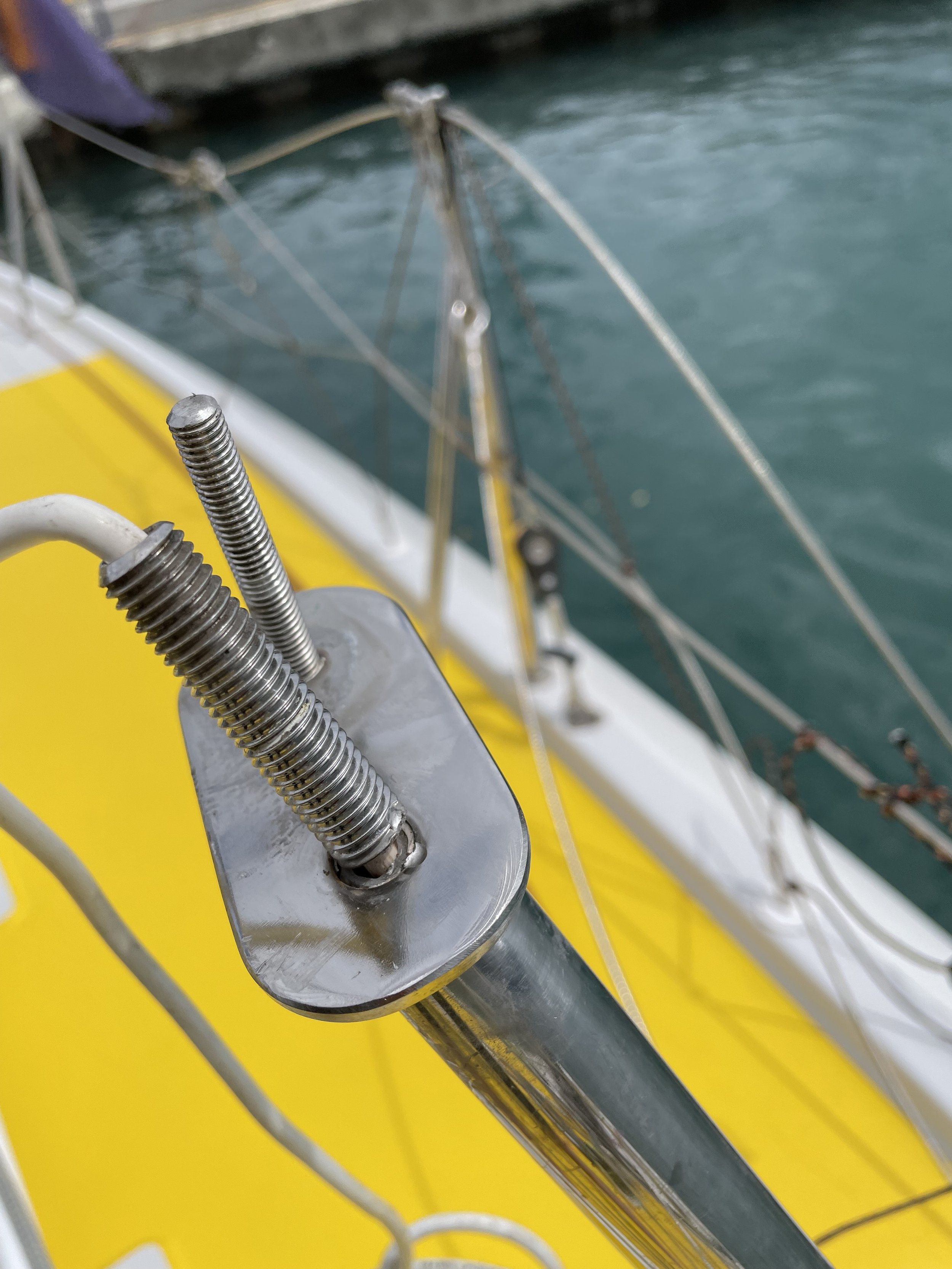A Sinking Feeling
Cracked frame and residual water
No matter how much you plan and refit your yacht, no matter how hard you train, you will always have trouble and the longer the race the more likely you will hit complex problems.
In Leg 2 of the Globe40, Amhas was doing well with a significant lead. We wanted to finish with as few problems as possible after 7200 nm, so started easing up on the boat. However the problems that were about to hit had already been put in place days and years before. They hit us just as we approached Madagascar. We had planned to get close to the island to tack out and avoid some bad current and get a push. However, that did not work out as we did not understand the current acceleration at the continental shelf and we ended up in a situation with significant wind over current.
As we tacked out in reducing light around sunset we noticed that Amhas had water in the bow area. She was always dry and it was not just a few drops - there was significant water in the boat. The sea state was building and we were crashing over some rather nasty chop in 25-30 knots of wind. Looking about with a flashlight, we rapidly noticed the water coming from the near the top of crash bulkhead where the electric wires penetrate it. How is it that our crash box could be full of water leaking into the main area of the yacht? And to make it worse, it was from an area very high up the bulkhead. The box had to be very full. We had inspected the watertight area every 7 days and have never had any significant water.
We removed the hatch and started to bail out the crash box with buckets over the next few hours, sailing down speed, getting bruised and banged up in the process. Once dried out, we collapsed with some hot drinks and a short rest as it was now late at night. After a few more hours, I crawled carefully forward to check in the area again. We left the hatch off to make it easy. There was again 5 - 10 L of water in just a few hours: we would not sink at this rate but with 5 days to go, there would be some bailing to do. In the process of all this we were thrown up against the deck multiple times.
“Ok, no problem… we can mange this leak,” we thought. But while I was inspecting it, I had missed the cracked bulkhead inside the box. It was flexing and delaminating on each wave. That section of the hull was flexing due to the loss of the bulkhead strength. This is when we made the urgent call to the team on the shore-side with pictures to ask how serious it was and whether we needed to stop and fix it on the water. Would the hull sides hold up? We still wanted to win the leg but not at the cost of irreparable damage. We had all the material onboard to temporarily fix it if we had to, but in the end, with the upcoming forecast and designer review, we just slowed down and tried not to impact the bow: no more sailing at 110% of polars; extra reef and smaller headsails instead.
The damage & the fix:
The water was coming from a cracked weld on the pulpit
We don’t know how the bulkhead cracked, but maybe with the extra weight of the water in the bow it overloaded the structure
Kyle saved us: he spent days in the sweatbox with a grinder and laminated the best fix.
In retrospect:
Install value and a pickup hose in the crash box so you can pump it out without having to remove the hatch
Have a quick connect fitting to move manual pump to this area if you need to bail it.
Maybe install an water alarm in the crash bulkhead or have a clear inspection hatch.
Understand all the construction of the boat.
Sister ship on the leg before had broken this weld also and ripped off the pulpit. Amhas had a different arrangment on the loading here and we assumed it to be ok.
Other RC3 had broken this bulkhead before and there was a repair plan, which we didn’t know about. Maybe all yachts need a place for common failures to be listed? We would have addressed this during the refit.
Broken weld was the toot cause. The starting failure in the chain.
Repaired


